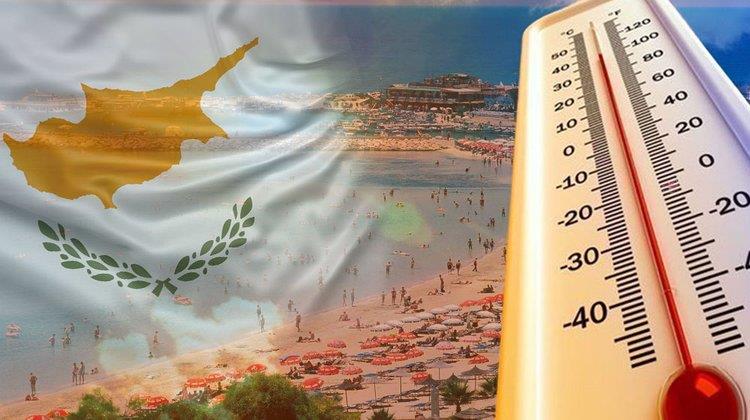Climate change will gradually drive tourism in Europe away from typical southern destinations to colder northern regions, which will obviously have a direct impact on Cyprus' tourism industry.
According to a new study by the European Commission entitled ‘Regional impact of climate change on European tourism demand,’ while tourism demand in Europe will increase overall, important regional patterns will nevertheless emerge. Of the European countries, Cyprus is the one that is affected to a great extent, both in terms of demand and the nature of the tourism it offers.
The study analyses data from 269 European destinations per monthly time period of 20 years.
Among other things, it is concluded that the northern regions will benefit at the expense of the southern ones, which will face "significant reductions in tourism demand".
At the same time, seasonality periods are also likely to shift from the summer months to spring and fall.
Four scenarios
Under four different temperature increase scenarios (1.5°C, 2°C, 3°C and 4°C) and two emission scenarios (RCP4.5 and RCP8.5), it appears that the higher the impacts of climate change, the greater the shift in tourism demand will be.
In the two temperature increase scenarios of 1.5°C and 2°C, the largest drop in tourism demand is estimated to occur in Cyprus (-1.86%) while the maximum increase could occur in the coastal area of Finland (+3.25%). Most European regions (80%) remain largely unaffected, with an impact on tourism demand between -1% and +1%.
On the other hand, in the 3°C and 4°C temperature increase scenarios, a clear north-south pattern in Europe's tourism demand emerges.
The regions of Central and Northern Europe are expected to become more attractive for tourist activities throughout the year, at the expense of the regions of the South and the Mediterranean. In a 4°C global warming scenario, 80% of regions are projected to increase their tourism compared to 2019. A growth rate higher than 3% in the number of overnight beds is also projected for a total of 106 regions. In contrast, 52 European regions in Bulgaria, Greece, Cyprus, Spain, France, Italy, Portugal and Romania are predicted to lose tourist flows compared to 2019.
Coastal regions are expected to experience the highest impacts on tourism demand if the highest warming scenarios are realized, representing 63% of affected European regions with tourism demand fluctuations greater than +/- 5%.
The biggest losses are predicted in Cyprus, Greece (-9% in the Greek Ionian Islands), Spain, Italy and Portugal, while Germany, Denmark, Finland, France, Ireland, the Netherlands, Sweden and the United Kingdom (+16% in West Wales) are expected to emerge as winners.
Times are changing
In addition to the geographic redistribution, new data is expected to emerge in terms of seasonality, with warmer destinations losing tourists in the summer. At the same time, what is expected is an increase in tourist flows in the spring and autumn, with a simultaneous rise in arrivals for the traditionally colder regions during the summer season.
Northern European coastal areas such as the UK and Serbia are forecast to see a significant increase in demand during the summer months and early autumn.
On the other hand, summer tourist flows to southern coastal regions, such as Spain and Cyprus, are expected to decrease significantly, especially if the 3°C and 4°C temperature increase scenarios are realized. This decline is to be partly but not fully offset by an increase in the spring, autumn and winter months.
The mountainous regions of Central Europe, such as Austria and Romania, are expected to see the least variation, with the increase in the number of overnight beds during seasons and winter ranging between +0.19% and +2%, depending on the overheating scenario.
The months’ shift
Overall in the European Union, tourism demand is expected to increase by 1.58% in the 4°C temperature increase scenario, while at the same time demand will increase during the spring months (March-May), but also in the autumn months (September - November) and decrease in summer. The month of April is projected to show the largest increase in tourist flows, with an increase of 1.96% in the 1.5°C warming scenario and 8.89% in the 4°C warming scenario, while the largest decrease is predicted for month of July, with -0.06% in the 1.5°C warming scenario and -5.72% in the 4°C warming scenario.
Regardless of either scenario, shifts in demand will be gradual. The study highlights that these trends become more pronounced over time and as temperatures rise, some top northern regions become suitable for summer tourism by the end of the century under the high-emissions and high-warming scenarios.
(Source: InBusinessNews)









